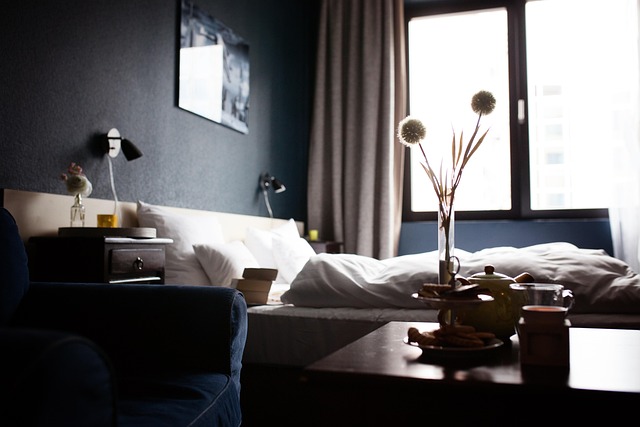Modern Window Solutions That Are Replacing Vertical Blinds
Vertical blinds once dominated office spaces and homes throughout the 1980s and 1990s, but today's homeowners are seeking more sophisticated and stylish window treatments. With evolving design trends emphasizing clean lines, natural materials, and smart technology integration, numerous chic alternatives have emerged that offer superior functionality and aesthetic appeal compared to traditional vertical blinds.

What Makes Modern Window Treatments Superior to Vertical Blinds?
Contemporary window solutions address many common complaints about vertical blinds, including their tendency to collect dust, create noise when moving, and appear dated in modern interiors. Today’s alternatives prioritize ease of maintenance, improved light control, and enhanced privacy options while complementing current design aesthetics.
Modern window treatments often feature advanced materials that resist fading, warping, and moisture damage. Many incorporate motorized systems for effortless operation, while others utilize innovative fabrics that filter harmful UV rays while maintaining natural light flow. These improvements make contemporary options far more practical and visually appealing than their vertical blind predecessors.
Which Horizontal Blind Styles Are Trending Right Now?
Horizontal blinds have experienced a remarkable renaissance, with sleek aluminum and wood options leading the charge. Extra-wide slat blinds measuring 2 to 3 inches create a more contemporary appearance than narrow alternatives, while cordless designs eliminate safety hazards and maintain clean sight lines.
Faux wood blinds combine the warmth of natural materials with enhanced durability and moisture resistance, making them ideal for kitchens and bathrooms where traditional wood might warp. Premium brands now offer composite materials that perfectly mimic authentic wood grain while providing superior longevity and easier maintenance.
How Do Cellular Shades Elevate Your Interior Design?
Cellular shades, also known as honeycomb shades, represent one of the most significant innovations in window treatment technology. Their unique construction creates insulating air pockets that dramatically improve energy efficiency while providing excellent light filtering capabilities.
These modern window solutions that are replacing vertical blinds come in single, double, and triple-cell configurations, with varying opacity levels from sheer to blackout. Top-down, bottom-up functionality allows precise light control throughout the day, while cordless and motorized options ensure safe, convenient operation.
What Role Do Roman Shades Play in Contemporary Interiors?
Roman shades bridge the gap between blinds and curtains, offering the structured appearance of blinds with the softness of fabric treatments. Modern iterations feature flat-fold designs that create crisp, clean lines when raised, eliminating the traditional gathered appearance that can appear cluttered in minimalist spaces.
Contemporary Roman shades utilize high-performance fabrics that resist staining and fading while offering various light-filtering options. Many feature blackout linings for bedrooms or thermal backing for improved energy efficiency, making them practical choices for any room in the home.
Why Are Panel Track Systems Gaining Popularity?
Panel track systems provide a sophisticated alternative particularly well-suited for large windows, sliding glass doors, and room dividers. Unlike vertical blinds that hang in individual slats, panel tracks feature wide fabric panels that glide smoothly along overhead tracks, creating an uninterrupted view when opened.
In regions worldwide, interior designers increasingly specify panel tracks for contemporary homes and commercial spaces due to their ability to accommodate oversized windows without appearing overwhelming. The system works exceptionally well with natural fiber fabrics, textured materials, and even bamboo panels, allowing for extensive customization while maintaining clean, modern aesthetics.
What Are the Cost Considerations for Modern Window Treatments?
Understanding pricing helps homeowners make informed decisions when upgrading from vertical blinds to contemporary alternatives. Costs vary significantly based on window size, material quality, and additional features like motorization or custom sizing.
| Window Treatment Type | Price Range per Window | Key Features | Best Applications |
|---|---|---|---|
| Cellular Shades | $75-$300 | Energy efficient, light filtering | Bedrooms, living areas |
| Horizontal Wood Blinds | $100-$400 | Natural material, durability | Traditional to modern décor |
| Roman Shades | $150-$500 | Fabric variety, custom options | Formal rooms, bedrooms |
| Panel Track Systems | $200-$600 | Large window coverage | Patio doors, room dividers |
| Motorized Options | +$150-$400 | Remote control, smart home integration | All applications |
Prices, rates, or cost estimates mentioned in this article are based on the latest available information but may change over time. Independent research is advised before making financial decisions.
Modern window trends that make vertical blinds a thing of the past continue evolving as manufacturers introduce new materials, colors, and operating systems. Smart home integration increasingly influences consumer choices, with motorized options becoming more affordable and reliable. The shift toward sustainable materials also drives innovation, with recycled and eco-friendly options gaining market share among environmentally conscious consumers seeking to elevate their interiors with these chic alternatives to vertical blinds.




